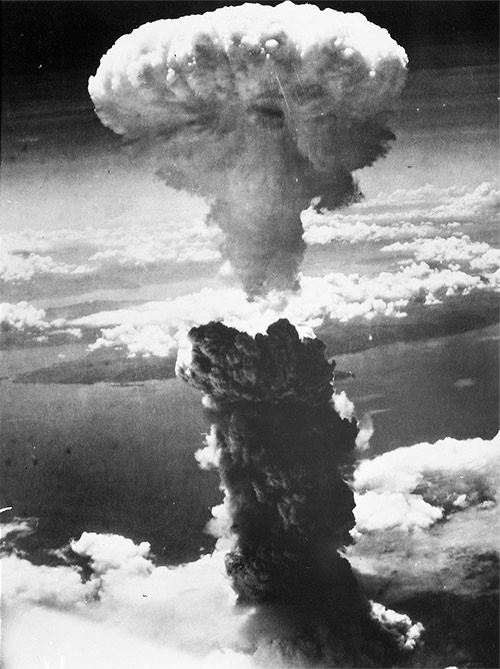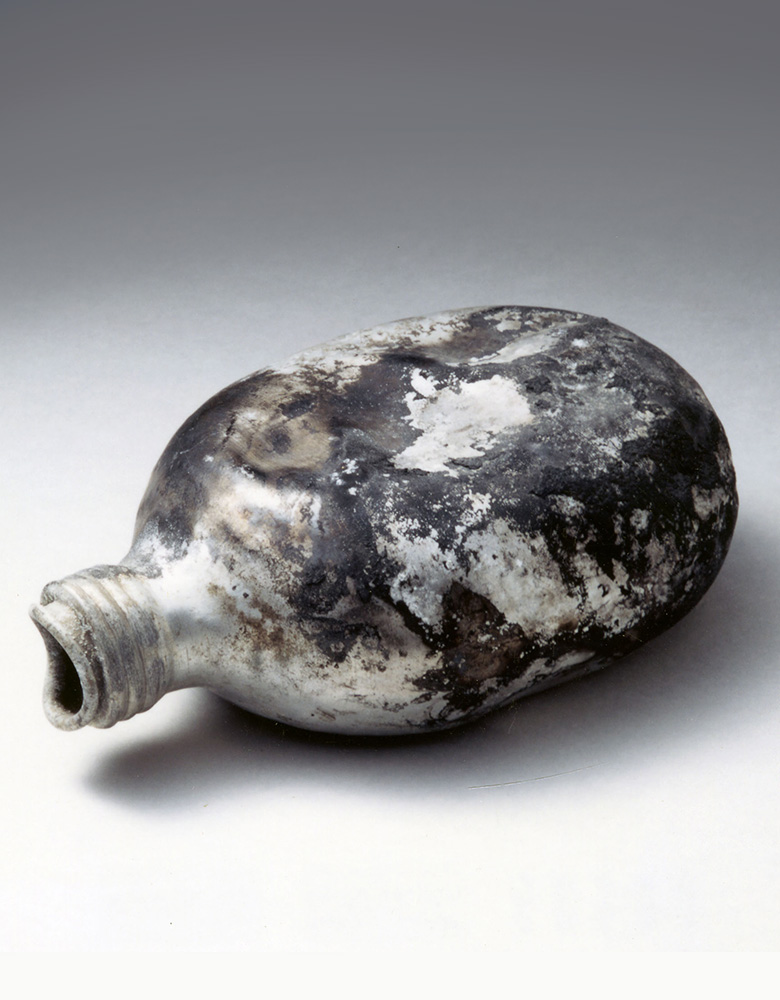

ATOMIC BOMB EXHIBITION
1 June - 31 October 2017
2 January - 31 August 2018
1 September 2018 - present
Original artefacts from Hiroshima and Nagasaki were replaced with replicas in September 2018. The Atomic Bomb exhibition is part of the permanent exhibition.
1 September 2018 - present
Original artefacts from Hiroshima and Nagasaki were replaced with replicas in September 2018. The Atomic Bomb exhibition is part of the permanent exhibition.

In the spring of 1945, World War II ended in Europe, but the fighting continued in the Pacific.
On the 6th of August, an American airplane appeared above the city of Hiroshima, carrying a new experimental weapon: the first atomic bomb to be used in action. Its effect was devastating; the attack was repeated on the 9th of August, in Nagasaki. Shortly after the attacks, Japan started peace negotiations with the Allies, and on the 2nd of September, a peace treaty was signed.
The atomic bombs were developed in the USA within the framework of the Manhattan Project, with the help of several Hungarian scientists – such as Ede Teller or Leo Szilard. The bombs left a huge number of casualties, most of them civilians. By the end of 1945 ,135 000 died in Hiroshima and 64 000 in Nagasaki due to the bombs. This was more than half of Hiroshima’s population at that time. A large number of deaths were caused by radiation poisoning too. The survivors were stigmatized and treated like pariahs for several years.
There is an ongoing debate about the necessity of dropping the atomic bombs. On the one hand, people are convinced that it was inevitable in order to minimize further losses, because an attack on mainland Japan, mainly because of the fanatic soldiers defending it, would have taken huge casualties,. On the other hand, some people believe that the Japanese were collectively demonized and there were no real military targets in the cities. There are some people who think dropping the bombs was a war crime against Japan.
The atomic bombs were developed in the USA within the framework of the Manhattan Project, with the help of several Hungarian scientists – such as Ede Teller or Leo Szilard. The bombs left a huge number of casualties, most of them civilians. By the end of 1945 ,135 000 died in Hiroshima and 64 000 in Nagasaki due to the bombs. This was more than half of Hiroshima’s population at that time. A large number of deaths were caused by radiation poisoning too. The survivors were stigmatized and treated like pariahs for several years.
There is an ongoing debate about the necessity of dropping the atomic bombs. On the one hand, people are convinced that it was inevitable in order to minimize further losses, because an attack on mainland Japan, mainly because of the fanatic soldiers defending it, would have taken huge casualties,. On the other hand, some people believe that the Japanese were collectively demonized and there were no real military targets in the cities. There are some people who think dropping the bombs was a war crime against Japan.

By the end of 1945, 135 000 died in Hiroshima and 64 000 in Nagasaki.
HIROSHIMA-NAGASAKI ATOMIC BOMB EXHIBITION

The entry for children under 6 years is NOT ALLOWED, and it is NOT RECOMMENDED for visitors under 12 years. More information HERE
60 minute English guided tours depart every hour on the hour from 10 a.m. to 7 p.m. We provide extra groups every 30 minutes from 12 a.m. to 5 p.m. during peak season.
Ticket prices HERE
60 minute English guided tours depart every hour on the hour from 10 a.m. to 7 p.m. We provide extra groups every 30 minutes from 12 a.m. to 5 p.m. during peak season.
Ticket prices HERE




